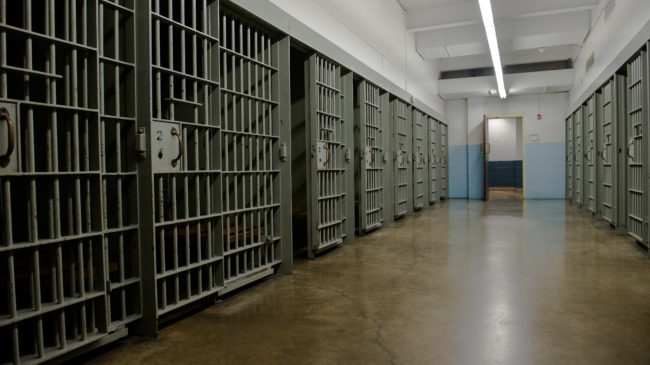California Proposition 25: Replace Cash Bail with Risk Assessments Referendum
Summary
In 2018, the California Legislature passed Senate Bill 10, which replaced cash bail with a risk assessment system to determine if suspects should be released or detained until trial. Proposition 25 is a referendum to allow voters to either approve or overturn that law. A ‘yes’ vote on Prop 25 is a vote to uphold SB 10 and continue the shift from a cash bail system to a risk assessment system for pretrial release. A ‘no’ vote would overturn SB 10 and return California to its previous cash bail system.
Fiscal Impact
Proposition 25 would potentially cost hundreds of millions collectively for local courts to re-adjust and set up new processes for risk-based pretrial release assessments, but would likely decrease local jailing costs in the tens of millions. There is also a potentially positive impact on state revenues as more people would be working and paying taxes while awaiting trial.
Proponents Arguments For
Supporters argue that Proposition 25 would move California away from an unjust, unfair, and expensive system that treats accused people differently according to how wealthy they are, not how much risk they present to the public. When someone is charged with a crime, they are innocent until proven guilty and should not be punished by being held in jail unless they are a danger to the public and flight risk. Cash bail was created to ensure the accused appear for their court dates, but only a small percentage of those accused of crimes fail to show for their trials. Supporters of Prop. 25 say cash bail makes it a crime to be poor, forcing those accused of a crime to pay large bail payments or expensive fees —if they can—to bail bondsmen so they can continue to work and be with family while they await their trial even if they pose little or no threat to society or risk of failure to appear for trial. Those who cannot afford it are forced to be locked up in jail, even though they haven’t been to trial yet or been convicted of a crime. Meanwhile, most wealthy people accused of crimes can easily afford bail regardless of how much of a risk they pose to society, Prop. 25 proponents note. It costs California taxpayers $5 million per day to keep people with low-level charges, who can’t afford bail, locked up in local jails. The only one who profits from the cash bail system is the $2 billion for-profit bail bond industry, proponents argue.
Opponents Arguments Against
Opponents argue that Proposition 25 would end California’s cash bail system that, they say, has worked well for generations. They say it would replace an effective system with an unproven one where computer algorithms managed by government bureaucrats will decide who is released before their trial, at a cost of hundreds of millions of dollars per year. These computer algorithm systems have failed elsewhere, they claim, notably in New York City. Opponents say even groups that support ending cash bail, like the American Civil Liberties Union (ACLU) and National Association for the Advancement of Colored People (NAACP), have expressed concerns about these algorithms based on worries they might end up creating more-biased outcomes than our current bail system, creating more, not less, discrimination against the working poor and minorities. Overburdened police and sheriff’s departments would have to take on responsibility for ensuring defendants appear in court and many of those who don’t show for trial would remain on the streets, putting communities at risk and jeopardizing justice for crime victims, opponents argue.
Discussion
Proposition 25 raises a few questions, including, was the cash bail system working well? Is replacing it with a risk system feasible and effective? Will crime go up if California makes these changes?
The cash bail system works well by one metric—most people show up for their trial. Nationwide 2.9 percent of defendants fail to show for trial, while in California that figure is 6.6 percent.
But success at this metric comes at a huge cost and leads to negative consequences in other areas. The latest data show 738,400 people are in U.S. jails, 70 percent of which are people not yet convicted, but being held pending trial—that’s about 517,000 people. When 70 percent of the people in jail are there because they can’t make bail and have not yet faced a trial, it makes a mockery of “innocent until proven guilty.”
Moreover, the consequences of being held in jail for these mostly low-income individuals, many of whom will eventually be found innocent, is usually loss of their job, the loss of their home and car, and catastrophic hardship for their families. These outcomes do not fall on everyone accused of a crime, but almost entirely on the poor and disproportionately on minorities.
What SB 10 created in place of this problematic cash bail system, and what Prop. 25 would continue, is a pretrial assessment system with the goal of using data to categorize the risk associated with a defendant to enable to court to make better pretrial release decisions.
Risk-based pretrial assessment systems assess the probability of pretrial misconduct or failure to appear in court using statistics and analysis. Each individual gets a risk score based on metrics that have been found to correlate to pretrial criminal activity and failure to appear in court. Such metrics include past criminal and court behavior, warrants, drug use, etc. Researchers find such risk scores are better predictors than unaided professional judgment.
The pretrial services agency uses this information to recommend options to the court for each defendant so that low-risk individuals are released to return for trial and high-risk individuals are kept in jail. Medium-risk individuals might be provided with court date reminders, drug, alcohol, or mental health programs, regular check-ins, eve-of-court-date electronic monitoring, or other options. The algorithms are used as tools to help the courts, not replace their decisions: for medium- and high-risk individuals, the court ultimately determines the appropriate pretrial outcome.
An important concern raised about this process, even by some supporters of reforming cash bail, is that computer algorithms may be unsuited to determine who should be released on bail and may perpetuate past biases of the system, such as disproportionately deeming risk based on race. At the same time, the current system has those problems, and the changes sought by Prop. 25 appear to target the right mix of using objective data from risk assessment tools and human judgment by the court. Moreover, a number of reports have found these tools have the potential to make pretrial decision-making more transparent, efficient, and equitable and avoid bias.
As an example, after a few years of using a pretrial risk assessment system Lucas County, Ohio, released data showing:
- The number of releases without the need for bail nearly doubled from 14 percent to almost 28 percent within three years.
- Pretrial crime fell. The percentage of pretrial defendants arrested for other crimes while out on release was cut in half — from 20 percent before down to 10 percent three years later.
- More defendants were returning to court. The percentage of pretrial defendants who skipped their court date fell from 41 percent to 29 percent three years later.
- The Public Safety Assessment is race and gender-neutral. Black and white defendants were being released at equal rates.
Some are still concerned that ending cash bail will lead to more crime. We don’t yet have solid empirical evidence on this question as some studies’ findings conflict. Cook County, Illinois, released a report evaluating its bail reform system and concluded it was saving a lot of money and not leading to any increases in crime, but a number of improvements are needed. A preliminary academic analysis of the program by University of Utah researchers disagrees and claims the program did lead to more crimes by released defendants. In New York City, claims that bail reform caused increasing crime conflict with analysis showing the police increase reporting of crimes in response to policies they don’t like, such as bail reform. Neighboring New Jersey enacted similar reforms and saw no increase in crime.
A meta-analysis (combining the results of a large number of studies) found little evidence that changing pre-trial release conditions for defendants affects their likelihood of committing crimes while released. And a study of pre-trial risk assessment and releases in Orange County, California, found that it did not increase the number of defendants who fail to appear for trial.
But whether crime increases or decreases, the current cash bail system still violates “innocent until proven guilty,” especially for the poor, with catastrophic ramifications for families. Proposition 25 is an attempt to fix that problem.

